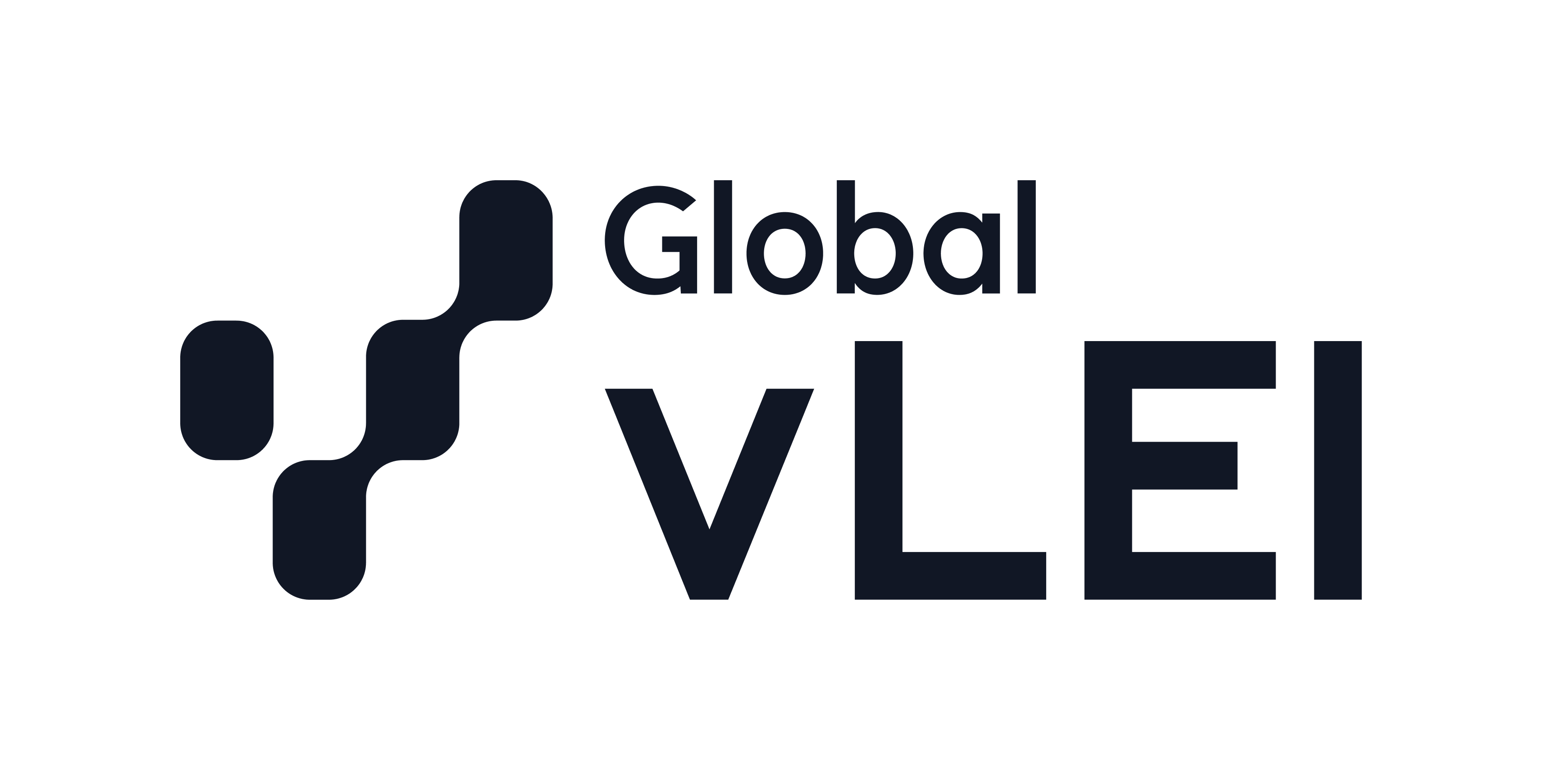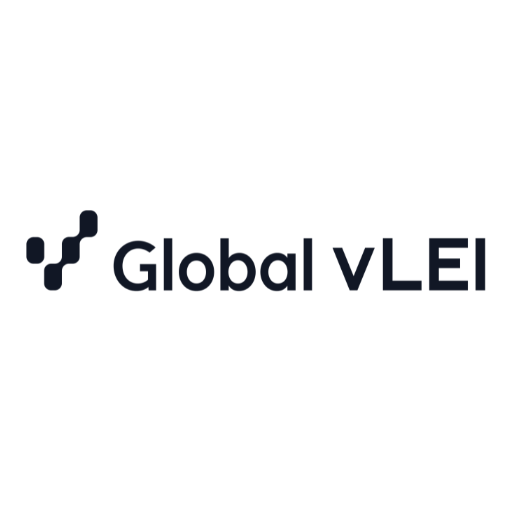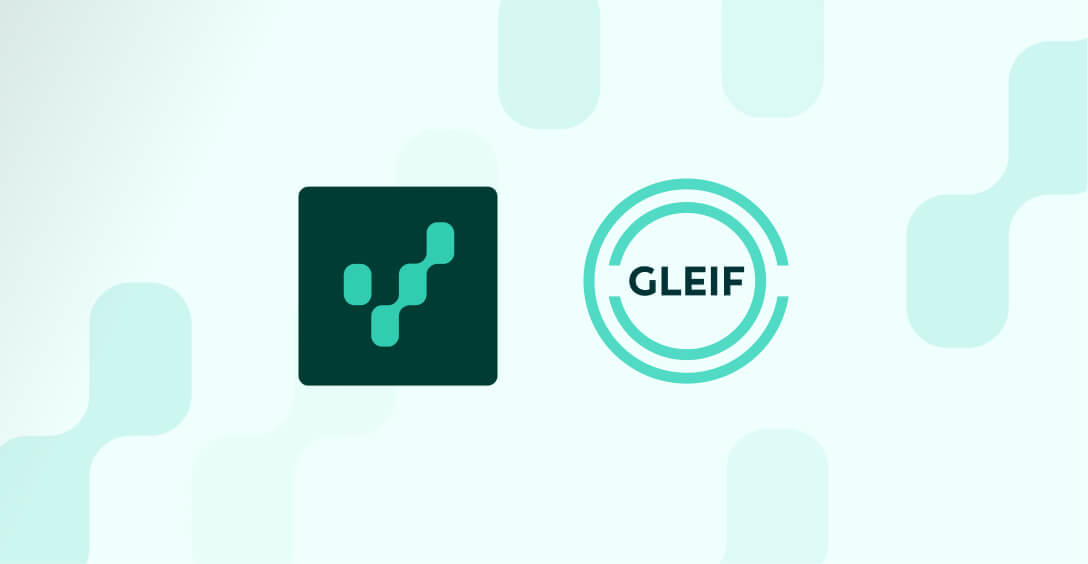vLEI – Verifiable Legal Entity Identifier
Global vLEI offers a way of verifying digital identities and handling compliance in a more efficient way.
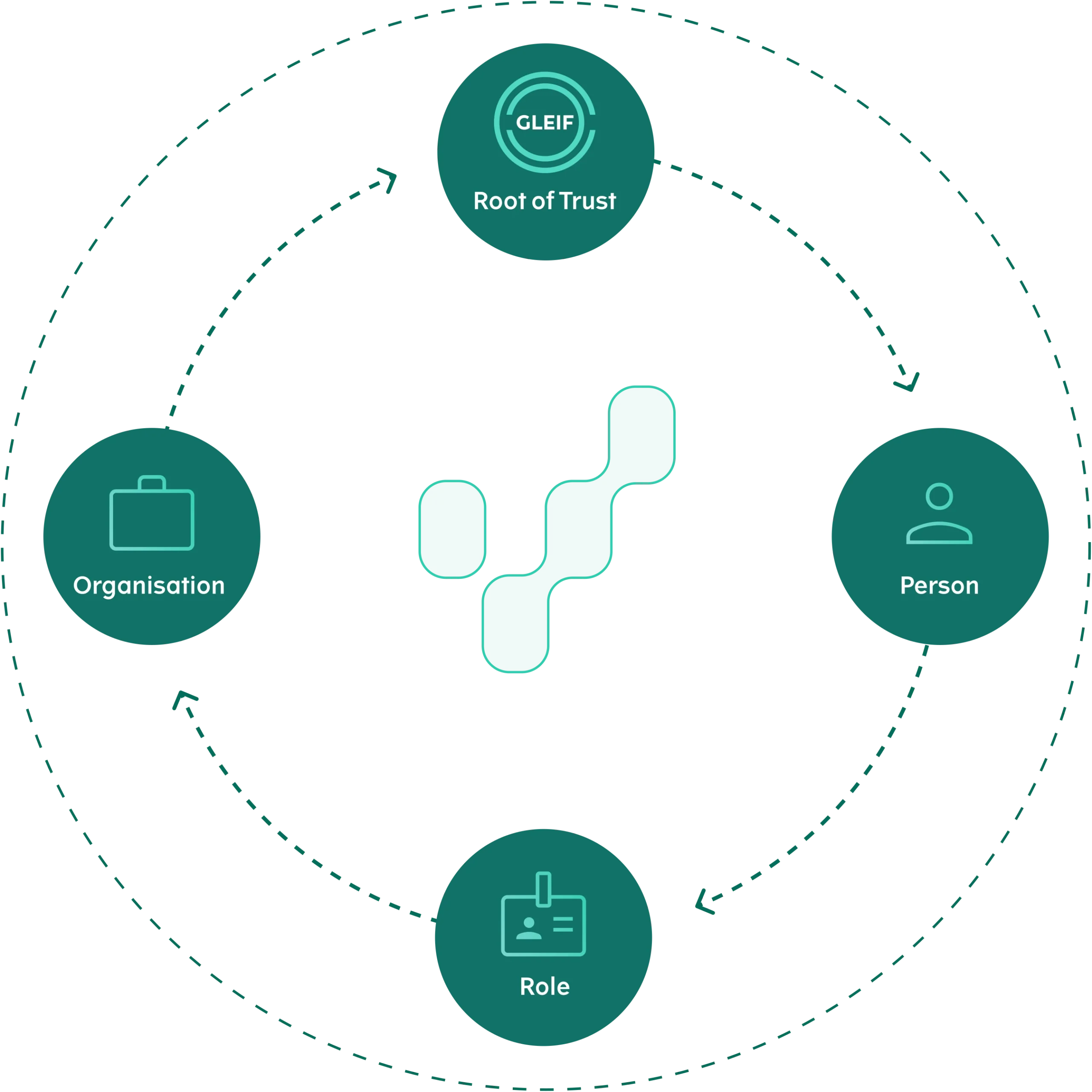
Why the verifiable legal entity identifier (vLEI)?

Trustworthy and cost efficient
The vLEI addresses both cost and trust issues by leveraging the established Global LEI System to establish a global digital trust framework and adhering to the Zero Trust Architecture principle of “never trust, always verify”.

Authority delegation
The vLEI enables more efficient management and operational effectiveness within organizations by allowing flexible internal workflow management, including the assignment or transfer of authority.

Authentication
The vLEI system necessitates that each vLEI is backed by an underlying LEI thereby guaranteeing accurate authentication of the entity.

What is the vLEI?
The vLEI, standing for “Verifiable Legal Entity Identifier,” is a digital and cryptographic evolution of the traditional entity identifier known as LEI. It enables decentralized and automated validation of organizational identities.
vLEI also allows the distribution of credentials that link individuals to formal organizational roles, allowing them to authenticate their identity in various activities from financial transactions to official communications
How the vLEI works
The vLEI system works by providing digital credentials based on the foundational Legal Entity Identifier (LEI). These credentials are issued and managed by Qualified vLEI Issuers, or QVIs, under the supervision of the Global Legal Entity Identifier Foundation (GLEIF).
The vLEI uses Distributed Ledger Technology (DLT) and other decentralized technologies to ensure the security and integrity of the credentials, allowing for reliable verification of organizational identities across different digital platforms.
GLEIF is the “Root of Trust” in the vLEI ecosystem
✔ QVIs are the Validators and Issuers
✔ Organizations are the vLEI holders
✔ Individuals linked to the organization’s vLEI can verify their authority and association with that organization
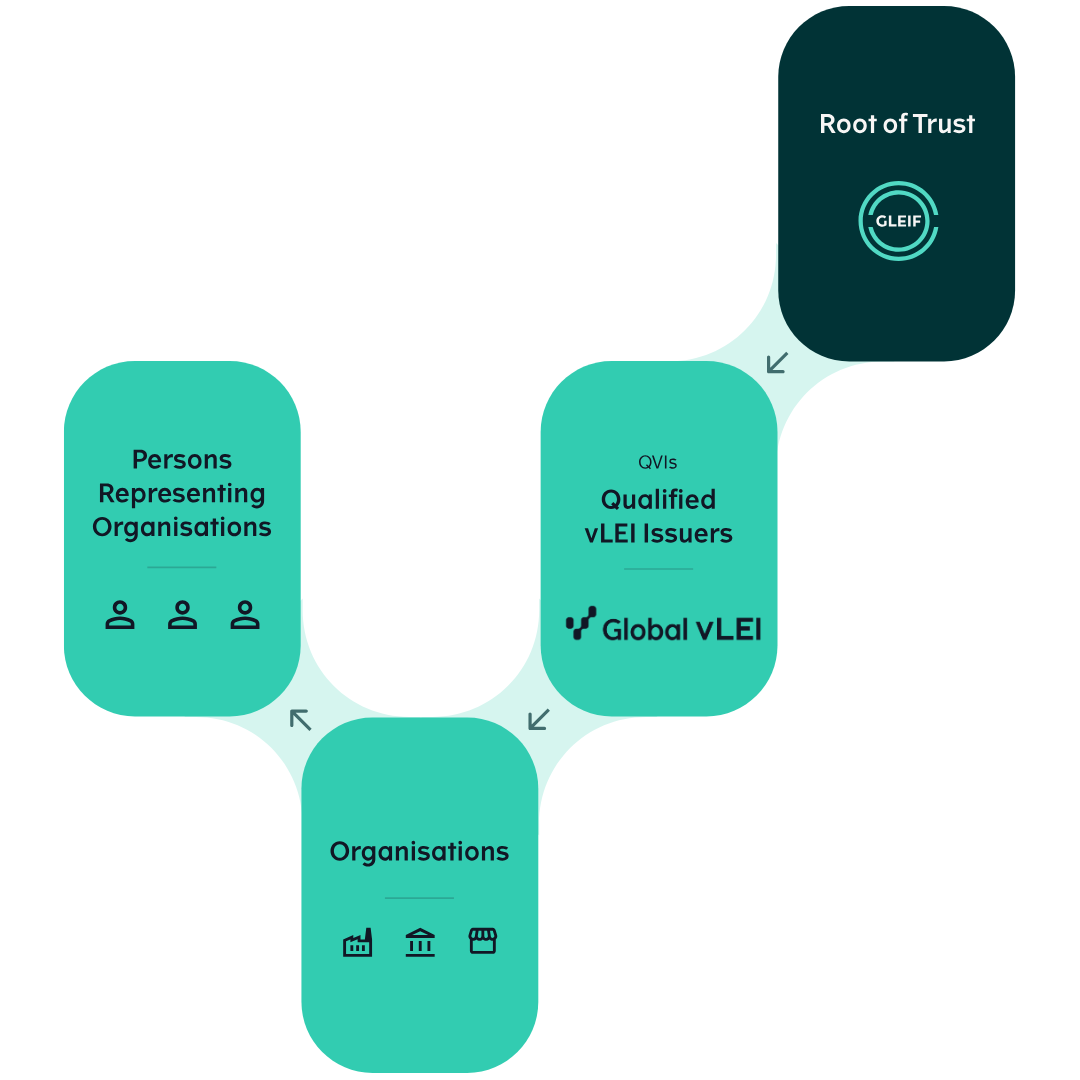
Verifiable Credential (VCs)
Verifiable Credentials (VCs) are digital certificates that securely verify the identities and roles of legal entities and their representatives. The credentials are digitally signed and tamper-resistant which provides a reliable means of automated authentication.
VCs within the vLEI system serve to establish a standardized and interoperable framework for identity verification across various industries and across borders. They are issued based on the underlying LEI (Legal Entity Identifier), which is a unique identifier already established to create transparency in the connections between financial transactions and corporations globally.
The vLEI credentials extend this concept to include not only the legal entities but also individuals acting in official capacities on behalf of these entities. This allows for a detailed and verified digital representation of both organizational and personal roles, enhancing trust in business transactions. The credentials can be managed throughout their lifecycle, including issuance, renewal, and revocation by accredited organizations known as Qualified vLEI Issuers (QVIs).

Authority delegation
In business-to-business transactions, safeguarding digital identities is imperative for maintaining trust and integrity.
The vLEI enables more efficient management and operational effectiveness within organizations by allowing flexible internal workflow management, including the assignment or transfer of authority.
Unified identification and authentication
vLEI combines identification and verification for organizations and their representatives, facilitating both official and functional roles within the entity.
Roles are verified against one or more public sources or documents provided by the organization.

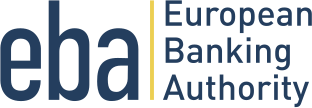
“The EBA has initially engaged Gartner Consulting to conduct a detailed technical risk assessment of GLEIF and vLEI. The key points from Gartner’s assessment, after scanning the market, have been that there are no comparably efficient alternative solutions globally.”
— by the European Banking Authority (EBA)
